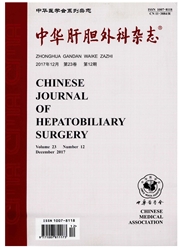

 中文摘要:
中文摘要:
目的将在与 rEg14-3-3 使免疫的老鼠对包虫 granulosus 调查保护的免疫。方法 ICR 老鼠皮下地与 rEg14-3-3 被使免疫三次, intraperitoneally 与包虫 granulosus protoscoleces 由挑战列在后面然后在六以后牺牲了月挑战以后由 MTT 试金检测 splenocytes 的增长,并且由 ELISA 测量 IL-2, IL-4, IL-10,和 IFN- 的分泌物。减少的胞虫包囊的率和在 sera 的 IgE, IgG 和 IgG 子类的层次被检验。结果老鼠与 rEg14-3-3 种牛痘并且与 protoscoleces 质问了 84.47% 的揭示重要保护的免疫。ELISA 分析显示使免疫的老鼠产生了 IgG 的特定的高水平, IgG 的占优势的适应于不同地区生活的动物是 IgG1 和 IgG2a。从与 rEg14-3-3 使免疫的老鼠的 Splenocytes 显示出重要增长回答。而在 IL-4 和 IL-10 没有重要差别,在种牛痘的鼠标显著地增加的 IFN-2 和 IL-2 的分泌物铺平在之间种牛痘并且控制鼠标。结果显示的结论 rEg14-3-3 疫苗能作为一个有希望的疫苗的候选人导致保护的免疫的高水平阻止膀胱的包虫病。
 英文摘要:
英文摘要:
Objective To investigate the protective immunity against Echinococcus granulosus in mice immunized with rEg14-3-3. Methods ICR mice were subcutaneously immunized three times with rEg14-3-3, followed by the challenge with Echinococcus granulosus protoscoleces intraperitoneally and then sacrificed after six months of post-challenge to detect the proliferation of splenocytes by MTT assay, and to measure the secretion of IL-2, IL-4, IL-20, and IFN -y by ELISA. The rate of reduced hydatid cyst and the levels of IgE, igG and IgG subclasses in sera were examined. Results Mice vaccinated with rEg14-3-3 and challenged with protoscoleces revealed significant protective immunity of 84.47%. ELISA analysis indicated that the immunized mice generated specific high levels of IgG and the prevailing isotypes of IgG were IgG1 and IgG2a. Splenocytes from mice immunized with rEg14-3-3 showed a significant proliferation response. The secretion of IFN-V and IL-2 increased significantly in the vaccinated mice whereas there was no significant difference in IL-4 and IL-20 levels between vaccinated and control mice. Conclusion The results indicate that the rEg24-3-3 vaccine could induce a high level of protective immunity as a promising vaccine candidate to prevent cystic echinococcosis.
 同期刊论文项目
同期刊论文项目
 同项目期刊论文
同项目期刊论文
 期刊信息
期刊信息
